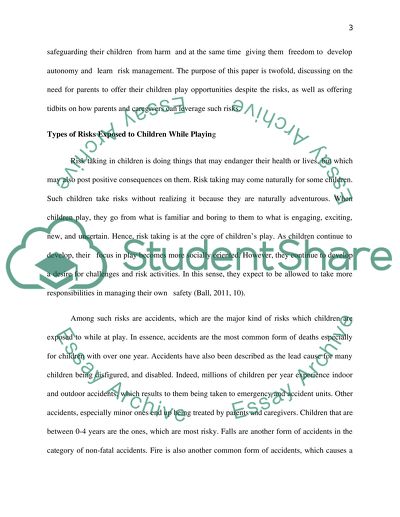Cite this document
(“Adults are faced with a dilemma: on the one hand, children need Essay”, n.d.)
Adults are faced with a dilemma: on the one hand, children need Essay. Retrieved from https://studentshare.org/education/1629995-adults-are-faced-with-a-dilemma-on-the-one-hand-children-need-opportunities-to-become-competent-risk-managers-on-the-other-adults-have-the-responsibility-to-keep-them-safe-gladwin-and-collins-2008-p-172-critically-assess-whether-this-dilemma-can
Adults are faced with a dilemma: on the one hand, children need Essay. Retrieved from https://studentshare.org/education/1629995-adults-are-faced-with-a-dilemma-on-the-one-hand-children-need-opportunities-to-become-competent-risk-managers-on-the-other-adults-have-the-responsibility-to-keep-them-safe-gladwin-and-collins-2008-p-172-critically-assess-whether-this-dilemma-can
(Adults Are Faced With a Dilemma: On the One Hand, Children Need Essay)
Adults Are Faced With a Dilemma: On the One Hand, Children Need Essay. https://studentshare.org/education/1629995-adults-are-faced-with-a-dilemma-on-the-one-hand-children-need-opportunities-to-become-competent-risk-managers-on-the-other-adults-have-the-responsibility-to-keep-them-safe-gladwin-and-collins-2008-p-172-critically-assess-whether-this-dilemma-can.
Adults Are Faced With a Dilemma: On the One Hand, Children Need Essay. https://studentshare.org/education/1629995-adults-are-faced-with-a-dilemma-on-the-one-hand-children-need-opportunities-to-become-competent-risk-managers-on-the-other-adults-have-the-responsibility-to-keep-them-safe-gladwin-and-collins-2008-p-172-critically-assess-whether-this-dilemma-can.
“Adults Are Faced With a Dilemma: On the One Hand, Children Need Essay”, n.d. https://studentshare.org/education/1629995-adults-are-faced-with-a-dilemma-on-the-one-hand-children-need-opportunities-to-become-competent-risk-managers-on-the-other-adults-have-the-responsibility-to-keep-them-safe-gladwin-and-collins-2008-p-172-critically-assess-whether-this-dilemma-can.


